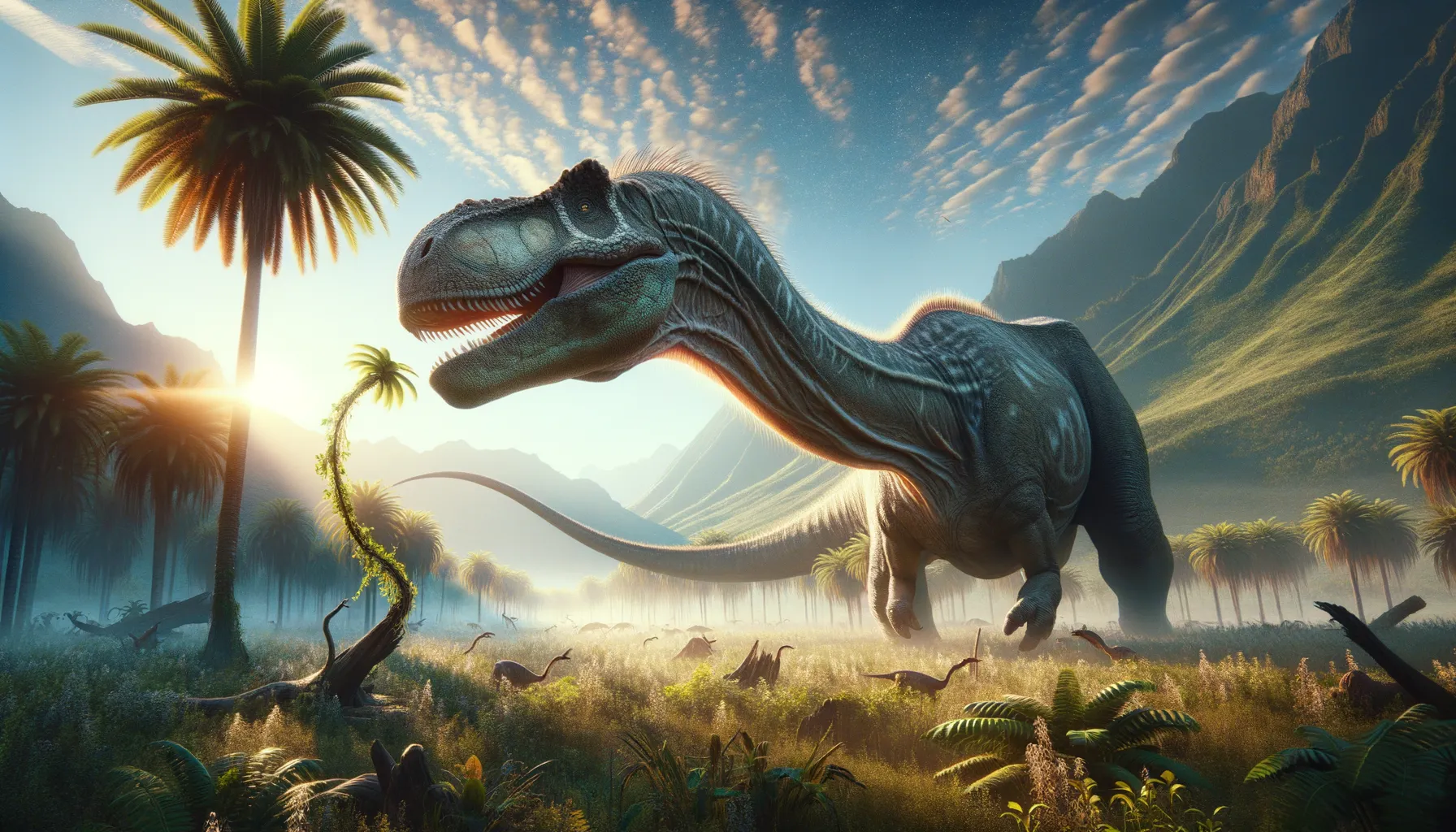
Sanpasaurus
The silent giant of ancient China.
Period
Jurassic
Length
Length varied between 13 to 15 meters.
Height
Stood about 3 meters tall at the hips.
Weight
Estimated to weigh up to 10 tons.
Sanpasaurus was a large herbivorous dinosaur from the Jurassic period, primarily recognized for its massive size and long neck. Thought to be a sauropod, it inhabited what is now China. Despite incomplete fossil records, it provides insight into the diverse range of dinosaurs that roamed Asia. Primarily quadrupedal, it used its long neck to forage for vegetation. Its discovery contributed valuable information to the understanding of dinosaur distribution and evolution.
Diet
Sanpasaurus was a herbivore, feeding primarily on plant material. Its long neck allowed it to reach high vegetation, giving it access to food sources unavailable to other herbivores.
Hunting
As a plant-eater, Sanpasaurus did not hunt in the traditional sense. It grazed on plants and foliage, using its long neck to reach various plant heights.
Environmental challenges
Living during the Jurassic period, Sanpasaurus faced environmental challenges such as fluctuating climates and predator threats. The presence of large carnivorous dinosaurs posed a significant threat. They also had to compete with other large herbivores for food resources in their habitat, requiring efficient foraging strategies.
Speed
It was likely slow-moving due to its heavy build.
Lifespan
Estimated to live several decades.
First discovery
Discovered in the Sichuan Province, China in 1944.
Fun Facts
- Sanpasaurus is a lesser-known dinosaur that walked the Earth during the Early Jurassic period, about 190 million years ago.
- This dinosaur was discovered in what is today Sichuan Province, China, and was one of the early sauropods, which are known for their long necks and tails.
- Sanpasaurus was herbivorous, meaning it fed on plants, which explains its long neck that helped it reach leaves high up in trees.
- While not as massive as some later sauropods, Sanpasaurus still had a robust body structure, similar to that of modern elephants.
- The name 'Sanpasaurus' means 'Sanpa lizard,' named after the area where its fossils were found.
- Sanpasaurus helps scientists understand the early evolution of sauropods, showcasing some of the features that would be seen in their larger descendants.
- Though no complete skeletons have been found, existing fossils suggest that Sanpasaurus had distinctive, spoon-shaped teeth.
Growth and Development
Sanpasaurus likely experienced rapid growth phases during its early life, enabled by a diet rich in plant material. Like other sauropods, they might have grown continuously, with size providing defense against predators. Bone studies suggest a long lifespan, allowing adequate time for reaching full size.
Habitat
Sanpasaurus would have inhabited regions with lush vegetation suitable for grazing. The environment may have included forested areas, riverbanks, and open plains. Such habitats provided both food sources and sufficient water supply crucial for their survival.
Interaction with other species
As a large herbivore, Sanpasaurus likely coexisted with various other dinosaur species. Its size may have offered some protection against predators. Herbivorous herds would have included Sanpasaurus, offering social interactions and mutual protection.
Natural lifespan
It is believed to have lived up to 70 years in the wild.
Reproduction
Sanpasaurus likely laid eggs in communal nesting areas, as seen in other sauropods. Females might have laid large clutches to improve offspring survival. Young sauropods were vulnerable and might have required protection until capable of self-defense.
Social behaviour
Sanpasaurus may have lived in herds, providing safety in numbers. These social groups facilitated communication and coordinated movements for migration and foraging. Herd dynamics could have helped in raising the young and protecting them from predators.
Fossil locations
Fossils of Sanpasaurus have primarily been found in the Sichuan Basin, China. The discoveries there have been crucial for understanding Jurassic dinosaur life in this region. Fossil evidence from these sites continues to contribute to paleontological research efforts.
